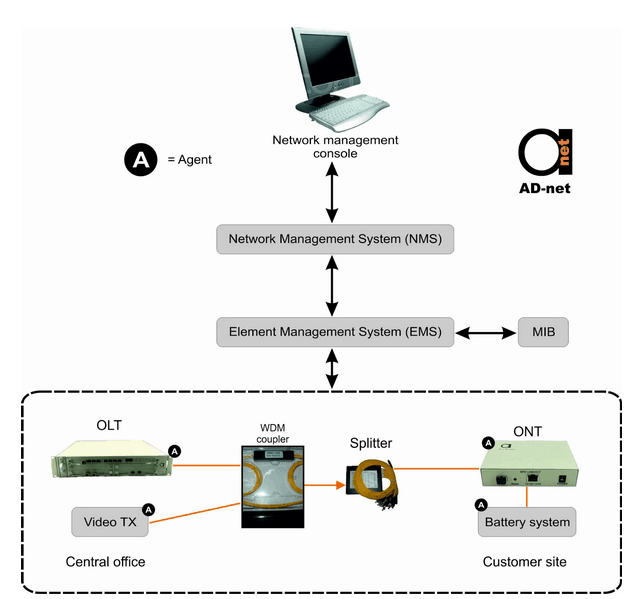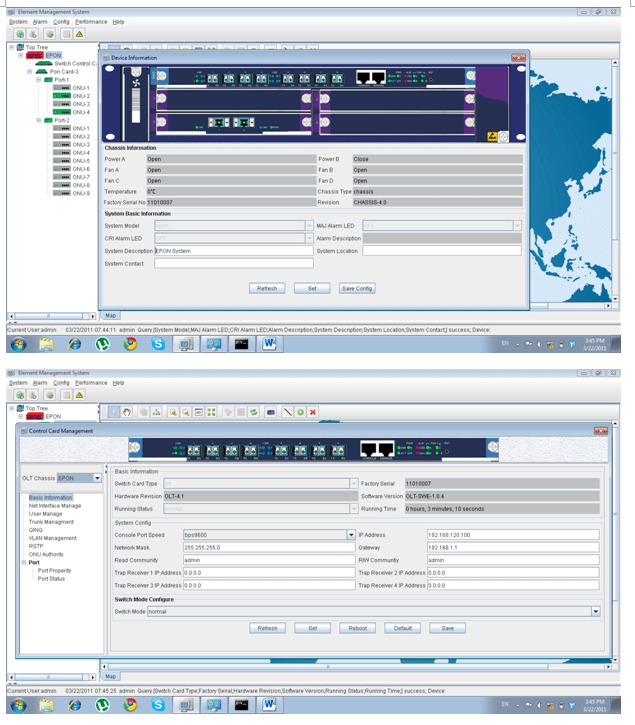Traditionally in FTTP network scenario, a service provider is supposed to install, configure, manage and monitor equipment on both sides of the network. Customers should be able to access and use network anytime, even when it is managed or monitored by service provider. To avoid system failure and loss in performance, service provider should be able to detect all the changes within network.
Service provider guarantees Quality of Service (QoS) on the level mentioned in service level agreement (SLA). So QoS is forcing service provider to supply customer with service 99% of the time with a designated bit error rate (BER), it’s critical to provide it. In case when requirements are not fulfilled customer may receive rebate or a one-time rate reduction. So it is in service provider interests to monitor key parameters constantly and very closely.
In a PON network, unlike traditionally, customer has an option to purchase his/her equipment himself/herself from any manufacturer on the market. In this scenario user is responsible for installation and maintenance of the equipment on his/her own premises. Since service provider is only responsible for central office and outside cable plant equipment, in case of equipment failure or malfunction on customer side it is not considered to be a service interruption and does not affect service provider in any way.
Network management console is allowing human network manager to control network resources and constantly view functionality of all devices in the network. It allows to check configuration and verify updates for the equipment software.

Figure 1. Components of a typical network management system and their relationships.
Element management system is used for the monitoring and controlling the OLT and ONT or backup batteries and power supplies. Note that ONT equipment should be able to support status queries and control functions form EMS, but the customer is usually responsible for it.
ITU-T Rec. G.983.2 specifies the ONT management and control channel structure, covering the protocol characteristics, format of the messages and ONT management and control interface (OMCI) functions.
Below you can see several screenshots of our 8 port OLT management system:

If you require more information about equipment and principles used in FTTx, send us inquiry at any time!


